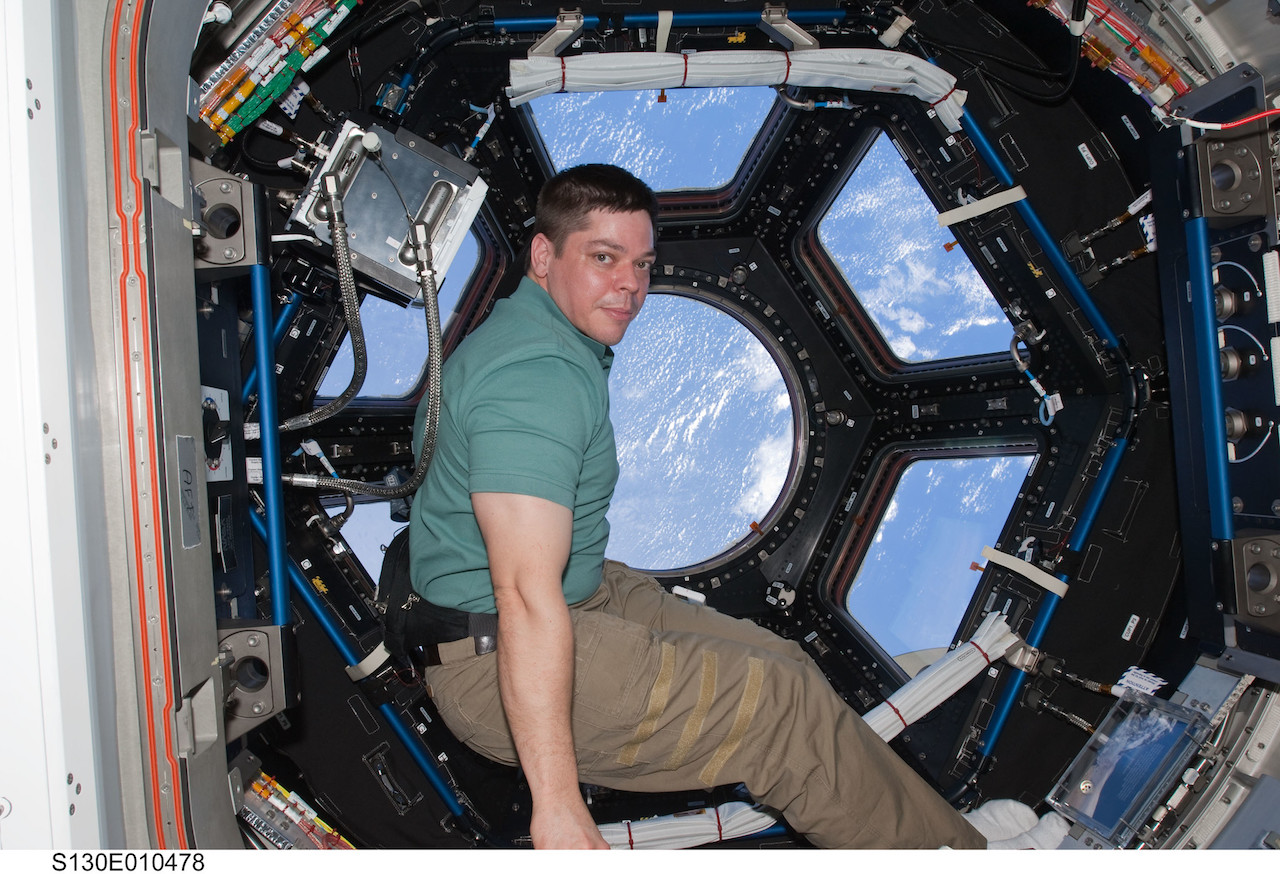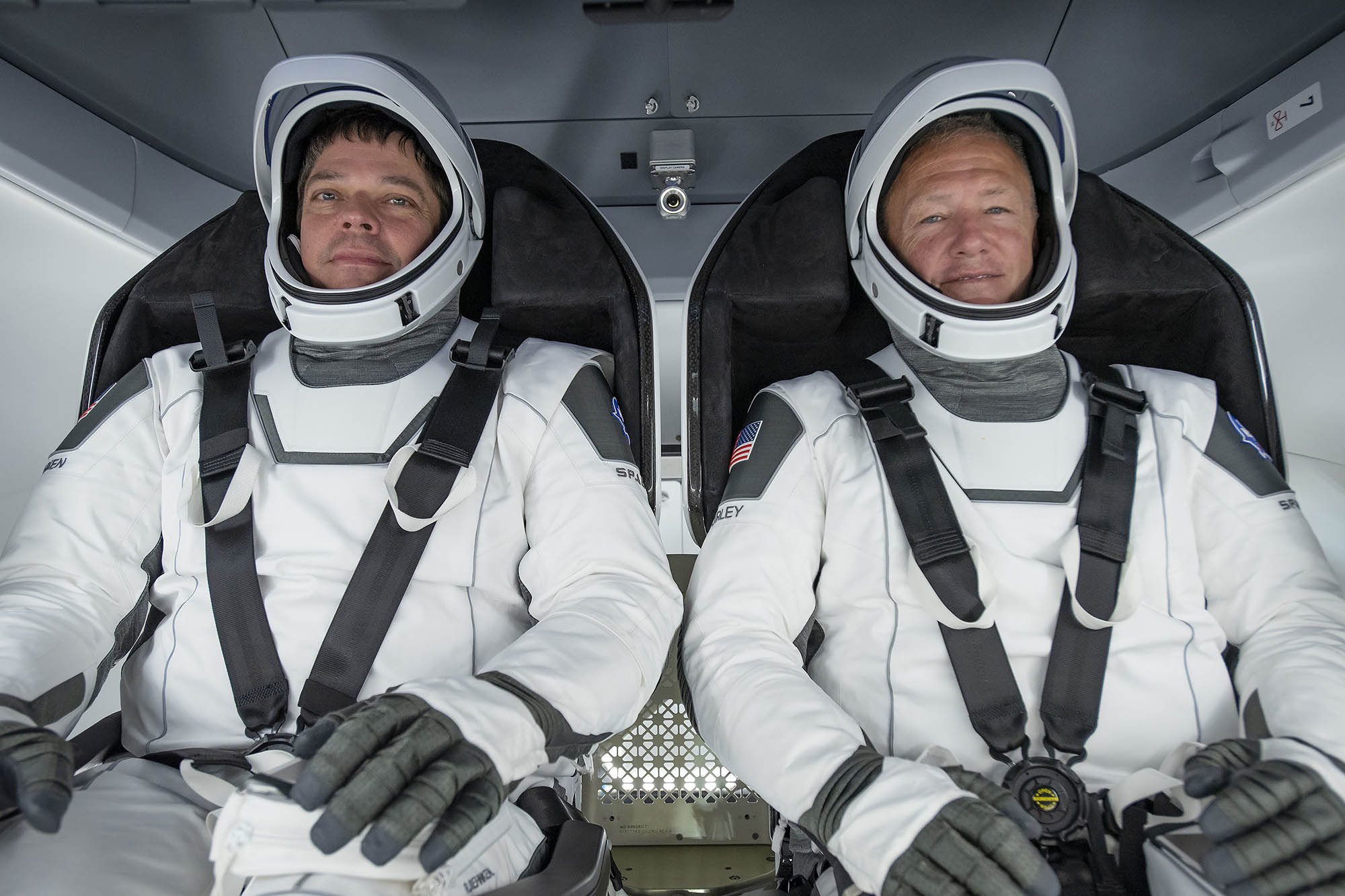Bob Behnken: NASA astronaut and SpaceX Crew Dragon joint operations commander
Reference article: Brief biography of Bob Behnken.

Robert "Bob" Behnken is a NASA astronaut and U.S Air Force Colonel. He was one of the first astronauts to fly the SpaceX Crew Dragon spacecraft into space. Behnken was accompanied by fellow NASA astronaut Doug Hurley on the historic SpaceX flight launched on May 30, 2020.
This was Behnken's third trip to space. He had already logged more than 708 hours in space and more than 37 hours of spacewalks while flying with space shuttle missions STS-123 in March 2008 and STS-130 in February 2010.
Related: SpaceX's historic Demo-2 mission explained in 13 steps
Early years
Behnken was born in St. Ann, Missouri on July 28, 1970. After graduating from Pattonville High School in Maryland Heights, Missouri, he attended Washington University in St. Louis where he majored in mechanical engineering and physics and was a member of the Air Force Reserve Officers' Training Corps. He then went to California Institute of Technology (Caltech) in Pasadena, California for graduate school, where he earned master's and doctorate degrees in mechanical engineering.
After graduate school, Behnken was commissioned for active duty with the Air Force and was based at Eglin Air Force Base in Florida where he worked as a developmental engineer and technical manager for new weapons systems.
Next, Behnken went to the Air Force Test Pilot School at Edwards Air Force Base. He was assigned to the F-22 Combined Test Force and served as the lead flight test engineer for the fourth F-22, a stealth tactical fighter aircraft that flies at speeds of up to 1,500 mph (2,414 kilometers per hour).
Behnken has flown more than 1,500 flight hours and piloted more than 25 different types of aircraft, according to his NASA biography.

Becoming an astronaut
NASA selected Behnken for the agency's astronaut program in 2000. After training, Behnken served in various roles within the Astronaut Office, including as Chief of the Space Station Operations Branch and as NASA's Chief Astronaut from July 2012 to July 2015.
Behnken's first trip into space was with the STS-123 mission in March 2008, aboard the space shuttle Endeavor. The mission was the 25th International Space Station assembly mission. The crew was tasked with delivering the first component of the Japan Aerospace Exploration Agency's (JAXA) Kibo Laboratory and the final element of the station's Mobile Servicing System known as Dextre. Behnken completed three spacewalks during the 16-day mission.
Related: How to become an astronaut
His next mission was STS-130, also aboard space shuttle Endeavor, in February 2010. The mission was the 32nd space station assembly mission and was responsible for delivering and outfitting the station's habitation module (Node 3) and the station's Earth-facing observation portal. Among other duties, Behnken served as the spacewalking lead and performed three spacewalks during the 14-day mission.
Once the space shuttle program came to an end, NASA launched the Commercial Crew Program to promote the development of private spaceflight companies that the agency would commission to send astronauts into space. In 2015, NASA announced that Behnken would be joining the agency's first class of commercial crew astronauts.
Boeing's CST-100 Starliner and SpaceX's Crew Dragon are the first spacecraft commissioned by the U.S. government to send NASA astronauts into space. After years of development and testing, SpaceX plans to launch Behnken and Hurley on the first crewed flight of Crew Dragon on May 27, 2020, from the Kennedy Space Center in Florida.

Flying with SpaceX
SpaceX successfully launched an uncrewed Crew Dragon capsule to the International Space Station on March 2, 2019, on a two-stage Falcon 9 rocket. The spacecraft then docked with the orbiting laboratory on March 3 and returned to Earth on March 8.
The six-day flight, dubbed Demo-1, carried a sensor-laden dummy astronaut named Ripley, which recorded a slew of information on what astronauts will experience while riding in the Crew Dragon capsule.
Related: Two NASA astronauts are ready to try something completely new: Ride a SpaceX spaceship
The Demo-2 flight will be the Crew Dragon's second flight — this time with Behnken and Hurley aboard. Demo-2 will be the first American astronaut crew launched from American soil since NASA's last space shuttle launch in 2011.
NASA and SpaceX will decide how long Behnken and Hurley will remain in orbit after Crew Dragon reaches space, but the mission is likely to last between one and four months. The mission's goal is to validate Crew Dragon and Falcon 9 for crewed flight, which will allow SpaceX to start flying operational missions to the ISS.
Related: SpaceX's Crew Dragon space capsule explained (infographic)
On the day of launch, Behnken's spouse, NASA astronaut Megan McArthur, and the couple's son will be watching from the safe confines of the Kennedy Space Center. They'll be joined by Hurley's wife, NASA astronaut Karen Nyberg and their son. After spending their careers together as military test pilots and training together as astronauts, Hurley and Behnken became close friends and are well suited to be paired up on this trailblazing mission.
"We can predict — almost by body language — what the (other) person's opinion is or what their next action is going to be. We've been doing this so long that it's kind of like having a second set of hands," Behnken told CNN.
Behnken and Hurley have both told reporters that they're thrilled to be part of such a historic milestone in spaceflight.
"I'm really excited for this NASA and SpaceX mission to bring human spaceflight back to the Florida coast," Behnken said during a news conference in early May 2020.
Additional resources:
- You can follow Bob Behnken on Twitter.
- Find the latest updates from NASA's Commercial Crew Program on their blog.
- Learn more about the Dragon and Crew Dragon designs on the SpaceX website.
Join our Space Forums to keep talking space on the latest missions, night sky and more! And if you have a news tip, correction or comment, let us know at: community@space.com.
Get the Space.com Newsletter
Breaking space news, the latest updates on rocket launches, skywatching events and more!

Kimberly Hickock has a bachelor's degree in marine biology from Texas A&M University, a master's degree in biology from Southeastern Louisiana University and a graduate certificate in science communication from the University of California, Santa Cruz. She is a former reference editor for Live Science and Space.com. Her work has appeared in Inside Science, News from Science, the San Jose Mercury and others. Her favorite stories include those about animals and obscurities. A Texas native, Kim now lives in a California redwood forest.










